Abstract
Following the end of the Great Depression of the 1930s, the sectarian system of foster care services in New York City practiced open discrimination. African-American children were generally segregated in a small number of overcrowded and understaffed all-Black institutions. As the African-American migration to the city accelerated in the years following the outbreak of World War II, a small group of psychologists, jurists, philanthropists, and social workers began a systematic challenge to this system. This paper explores the role of racism in shaping New York's foster care system and the experience of African-American children who were forced to depend on services originally organized to serve Whites. It also looks at the ways race affected the way children were typed--as mentally ill, delinquent, or even criminal--in response to the structural realities of a system that sorted children into separate types of institutions according to race. The paper also provides the background for understanding the landmark challenge to segregation of children in sectarian and public institutions represented by Wilder v Sugarman.
Full text
PDF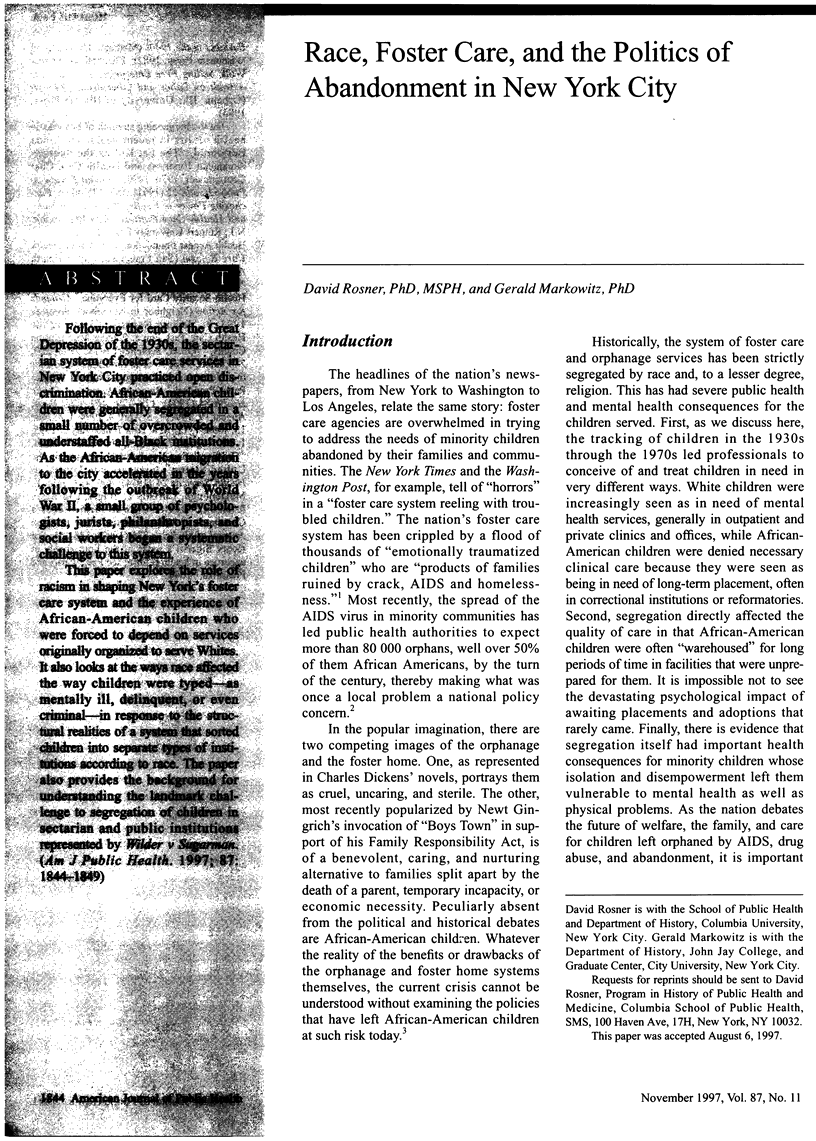
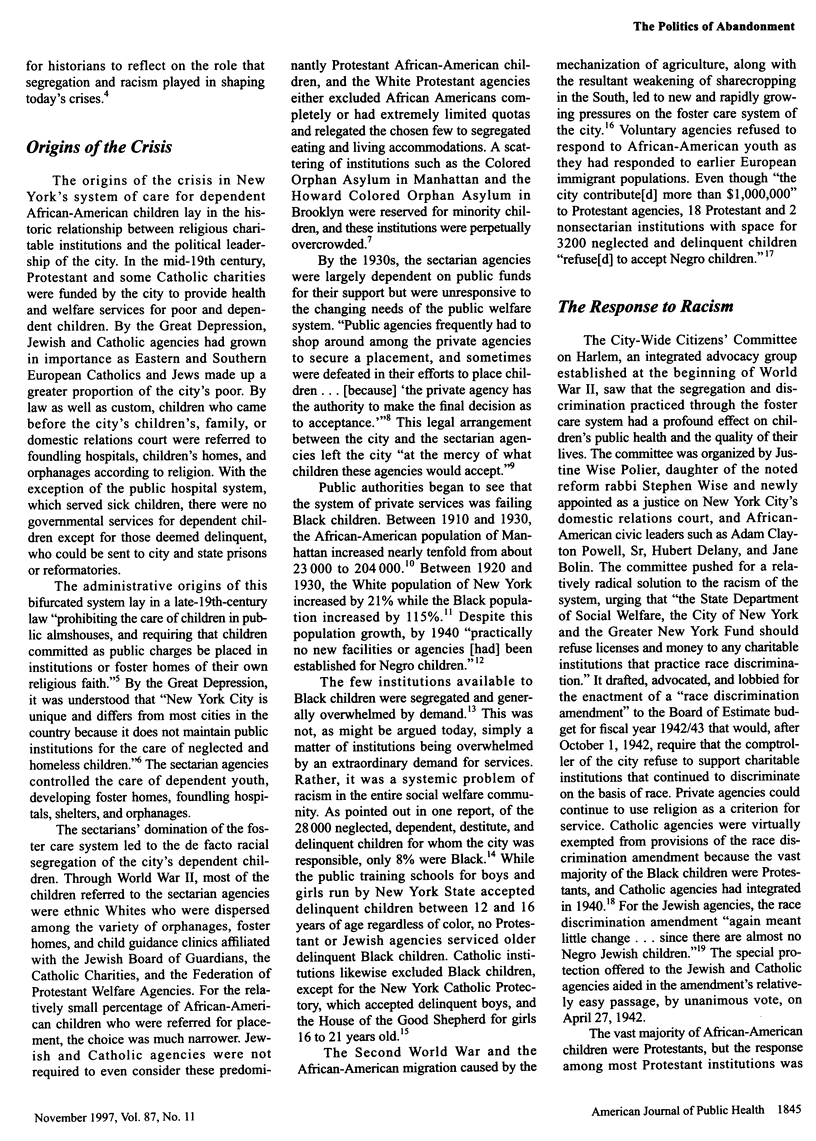
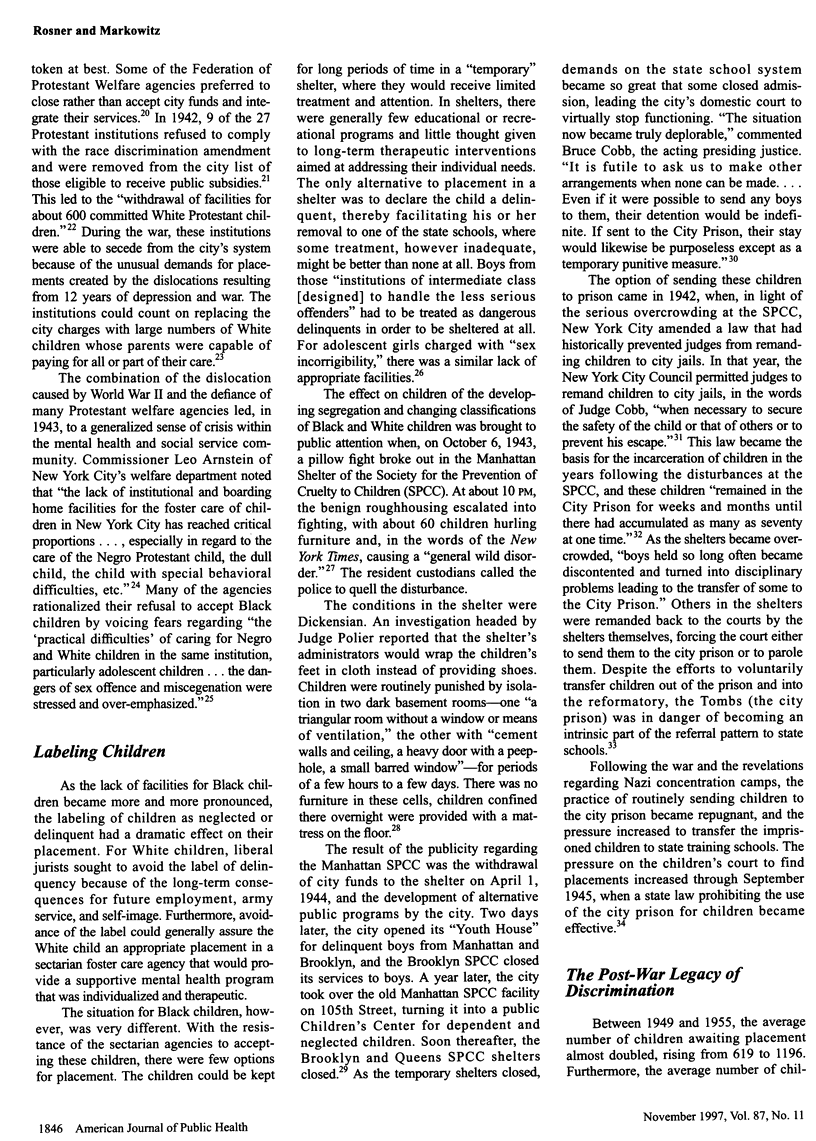
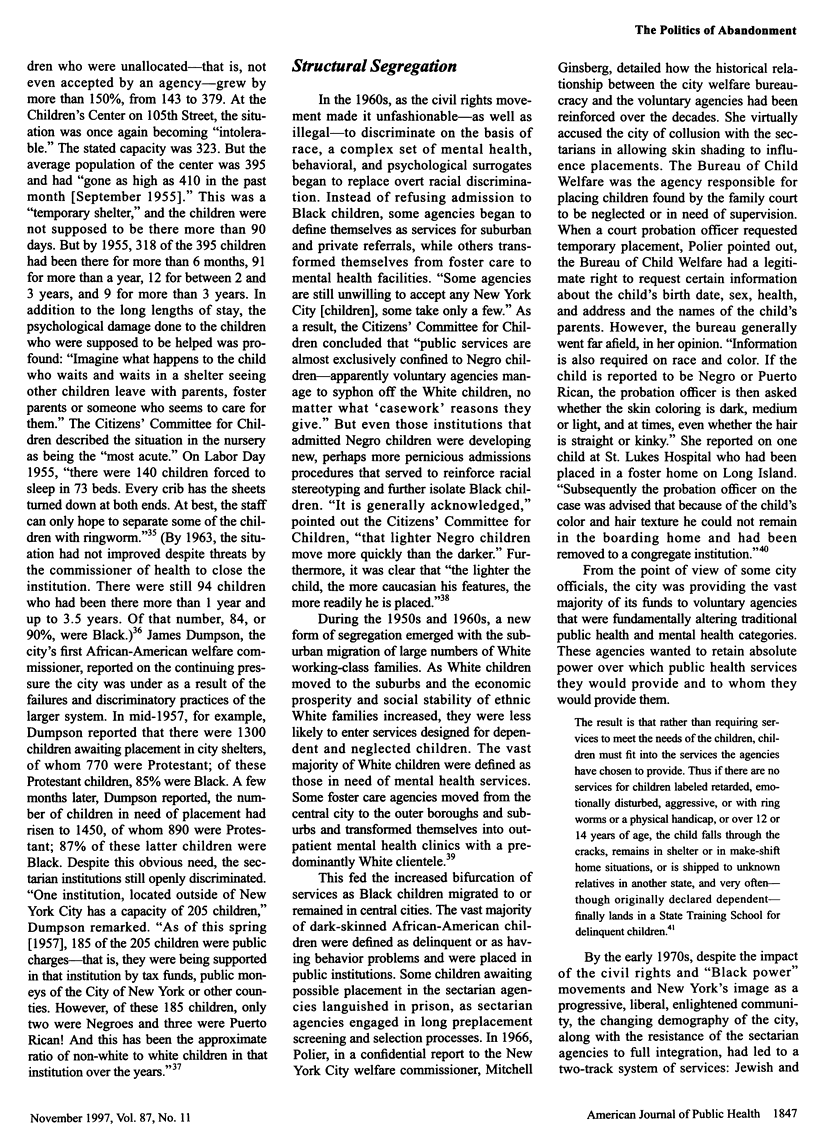
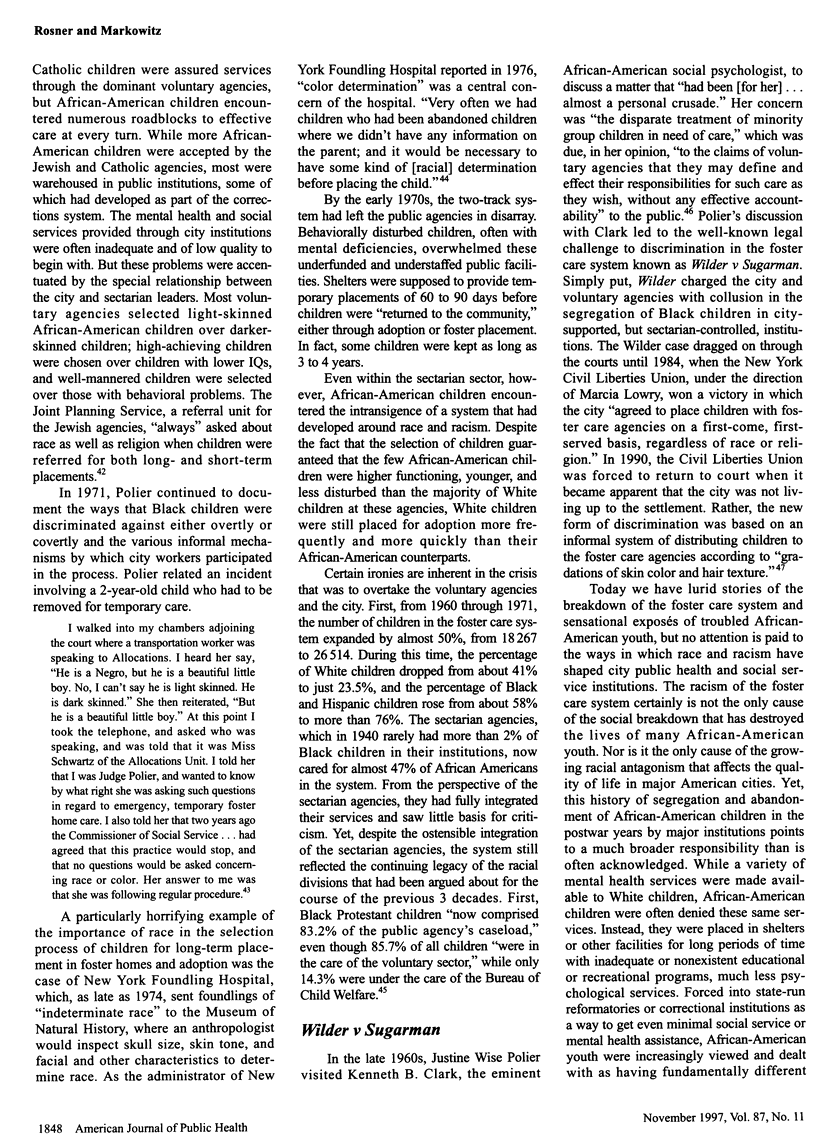
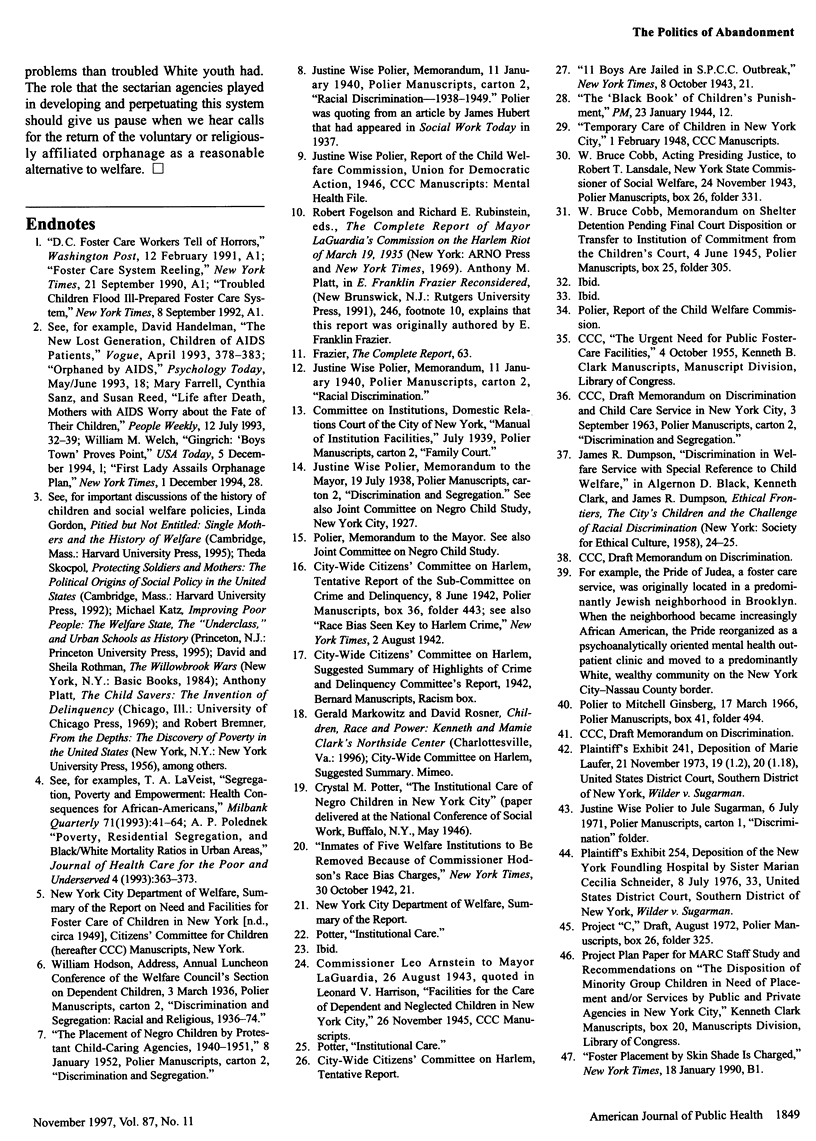
Selected References
These references are in PubMed. This may not be the complete list of references from this article.
- Laveist T. A. Segregation, poverty, and empowerment: health consequences for African Americans. Milbank Q. 1993;71(1):41–64. [PubMed] [Google Scholar]


